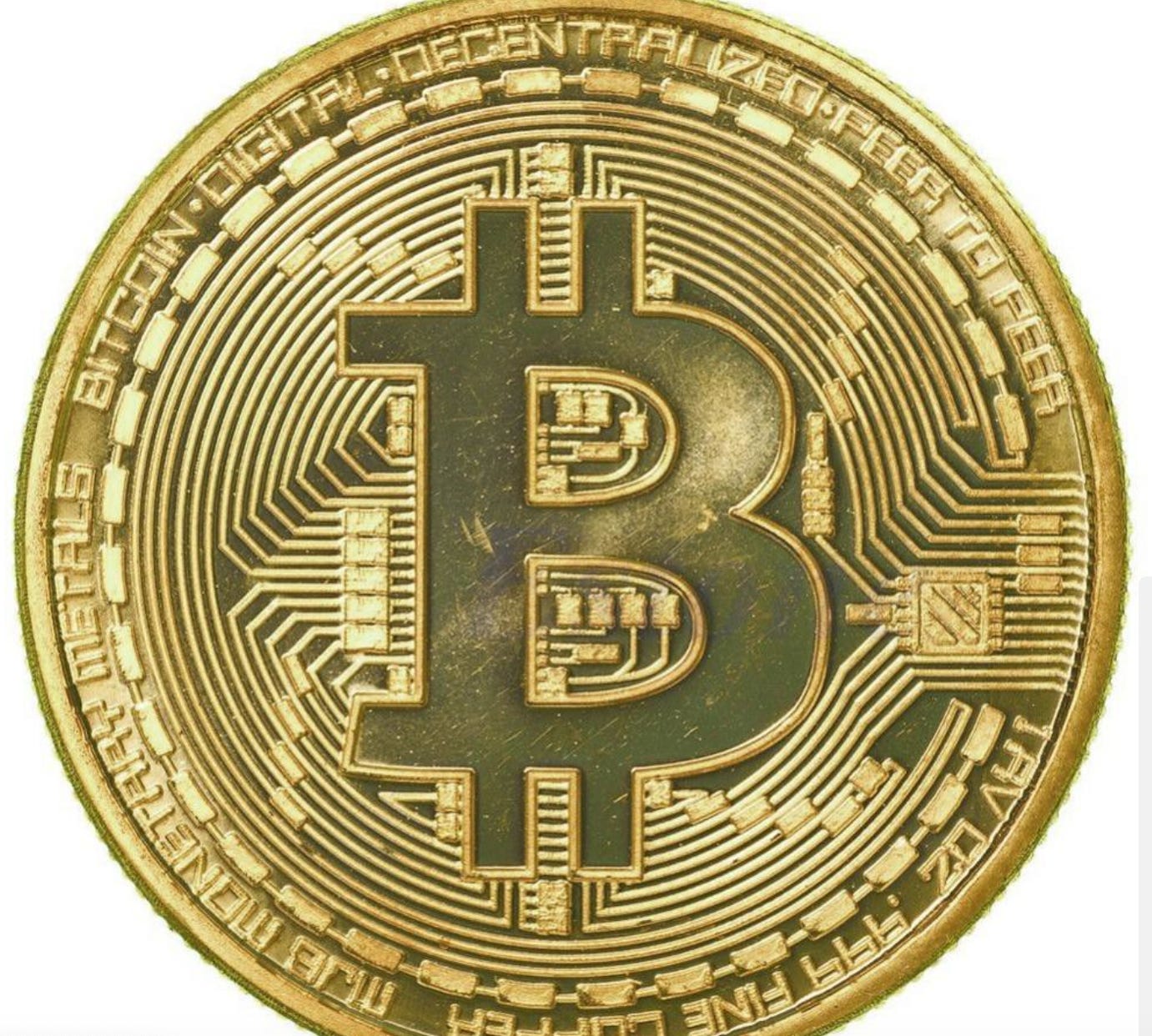WHAT WILL THE NEXT CURRENCY BE?
Financial experts Jennifer Arcuri and Gordon Kerr offer an insight into the future
AS Western governments have devalued traditional fiat currencies (dollars, pounds, euros etc) through quantitative easing that so few now believe in them, questions are being asked about what the next form of money will be.
It is not just about which currency will take over from the dollar as the international reserve currency (although that is being debated every day now), it is the actual form that money could take going forward.
Crypto enthusiasts point to the rise of this new technology as the saviour of the world’s trade, while gold-bugs point to the stability and solid history of pegging some form of currency to the precious metal.
The rouble is doing so well right now partly because of its gold reserves and the fact that it is backed by both gold and commodities. What is crypto backed by? And so the discussion goes on.
In the background we have the ever-present, sinister threat of CBDCs (Central Bank Digital Currencies), the spin off of crypto and fiat currencies that would take many of the clever and convenient elements of decentralised cryptocurrencies and use them against citizens by forcing all transactions to be made through the central bank; simply put, they will have control over what you are allowed to spend and how you spend it.
We need to be awake and aware of what forms of currency are available and make sure that we have a say in what we come to use to buy our daily bread.
Here, writing exclusively for News Uncut, two experts from opposite sides of the currency question give their views on what the next form of money could be.
Jennifer Arcuri, co-founder Hacker House
AS the world economies take us step by step closer to the inevitable collapse of the petro dollar, one can’t help but look to blockchain and digital assets for where innovation within financial technology will drive forward next.
Most people think of blockchain or hear the words “cryptocurrency” and assume “bitcoin.” Especially as “Bitcoin” is the one that is most discussed on the mainstream news.
But there are other digital assets currently being adopted within financial institutions taking place all over the world. This is where an ISO [International Organisation for Standardisation] accredited coin, XRP, comes in.
Ripple, the company behind the XRP ledger, is currently taking on the SEC (the Securities and Exchange Commission) in what many would argue is an unfair lawsuit that has sabotaged the price of coin over the last year; a move made by the US Government to ensure that it gets a large slice of the action which XRP is making.
So what makes XRP so interesting?
XRP is poised to replace the world’s financial backbone, becoming a key technology for which banks will build additional blockchain-backed technologies. Think of it as a “bridge asset”. It is designed to provide a cross-border, multi-asset, immediate transfer system capability for all the money intended to take over the traditional bank messaging system known as Swift.
How does XRP compare to Bitcoin?
It doesn’t. Bitcoin is slower, less sustainable and certainly not scalable, as it’s more costly, which is not tailored towards the market needs of financial technology services. But Ripple’s XRP is.
The use of Ripple within financial institutions has already begun, with OnePayFX in use by Santander paving the way for financial institutions to make immediate cash settlements and inter-payment processing across borders.
Ripple also joined the United States Treasury’s Federal Task Force in 2015 to help streamline faster payments for the next generation of cross border payments. There are many examples of the ways Ripple technology is being adopted as we speak but the bottom line to note with XRP is that:
Everything in life comes with a payment. Whether you are transacting on blockchain, banks, mobile money, or online wallets – blockchain alone doesn’t solve the problems seen with payments.
The fragmentation in payments comes from an antiquated outdated system that is riddled with insecurities and often times very slow, especially when sending payment internationally or from one ledger to another.
This is where the Interledger Protocol (ILP) comes in, aka the internet’s payment rails. ILP settles inter blockchain payments; it is the payment rails for making payments across ledgers.
The main key to the ILP is the interoperability component of the transfer system. Essentially any value can be sent to another value, any currency can transact with another currency. It is the ultimate global payment network.
When the economy collapses and we revert onto a blockchain-backed system, the one that makes the most sense for settling global payments is undoubtedly XRP.
In the near future, property transfers, car ownership, loans and many more financial products will be available, tradable and transferable through the use of XRP. These changes have placed Ripple and its technologies at the centre stage of the most exciting innovation in the financial technology environment in years.
WHERE TO BUY PRE IPO RIPPLE SHARES SIGN UP:
https://www.anrdoezrs.net/click-100632278-15176970)
https://www.linqto.com/signup?r=8p2wyazmym
WHERE TO BUY XRP:
https://uphold.com/signup?referral=c5cba62c0a
For more information on XRP, Ripple and the transition within the financial systems please join my telegram channel:
https://t.me/RealJenniferArcuri
Gordon Kerr, founder and CEO Cobden Partners
JUST as the war in Ukraine has provoked renewed media analysis of 1939 and whether Hitler could have been stopped, any thinking about the next currency should start with some analysis of recent monetary history.
E-gold
Little known on this side of the pond, from 1995 to 2007 in the US, former oncologist Dr Doug Jackson enjoyed substantial success with his brilliantly designed currency: e-gold. Every currency unit was backed by a specified quantity of gold.
All the gold was securely stored and pledged to the currency holders in a legally rock-solid way; we know this because after shutting down e-gold the US federal authorities tried to confiscate the gold but were rebuffed on civil legal grounds.
Of critical importance, this unique currency (there has been nothing like it ever before or since) ran on its own dedicated architecture; it was outside of the banking system, SWIFT and the Fedwire payment rails. Account holders could only trade and make payments to other e-gold account holders. What an achievement to create such a viable and popular currency from scratch.
Despite Dr Jackson’s bad luck – he continues to appeal his conviction for breaching technical licensing rules, claiming that he complied with all laws – e-gold was a spectacular success and grew exponentially. In 1999 the Financial Times described it as “the only electronic currency that has achieved critical mass on the web”.
Crypto
No cryptocurrency is, or ever could be, a candidate for classification as a system of money. Each present cryptocurrency is simply a little ponzi scheme or ‘tulip’, to be polite.
Bitcoin was invented by one of Dr Jackson’s junior employees – Craig White. It is no coincidence that the White Paper appeared shortly after e-gold’s 2007 suspension. Crypto and blockchain are elegantly debunked by Dr Jackson himself in the following 57 page paper:
Some key points:
The two premises underlying Distributed Ledger Technology (DLT) are themselves false. These are: i) financial institutions cannot be “trusted third parties to process electronic payments” an allusion to the risk of payment repudiation by banks who could falsify records, and ii) existing payments systems eg SWIFT are exposed to the single point of failure risk. Neither has nor could occur.
These two baseless points in turn drive a design in which each participant to any of the bitcoin “nodes” has a complete copy of all data, for ever, related to that node’s coins. Such continuous accretion of data is absurdly wasteful and has already resulted in bitcoin, despite generating an infinitesimal percentage of the world’s payments, accounting for 0.6 per cent of global electricity consumption. Payment processing is ridiculously expensive (US$ 5 -10) and even then, takes a minimum of 10 minutes. Nobody will ever buy a coffee with bitcoin.
Cryptocurrencies are anything but robust. Both bitcoin and ethereum have failed multiple times; they are highly centralised and their key managers tend to fall out with each crisis, leading to the reverting of blocks (ie the reversal of already made payments) and forking; there are about six different variants of bitcoin at present.
There are no valid use cases for blockchain or DLT; all existing ‘use cases’ are better processed by already existing systems.
The Future – A Revived E-gold
There seems little doubt that e-gold was attacked precisely because it was, by 2007, beginning to pose a genuine threat to the monopoly of the mighty US dollar.
I have no doubt that the next successful currency will be an updated version of e-gold. This will be hated by governments addicted to debt and fiat, so if the euro unravels I expect to see a fiat deutschemark with Olaf Scholz’s handsome face painted on it, but I doubt that any citizens will voluntarily wish to hold such.
*Contributors were writing before this week and any changes in the markets are therefore not necessarily reflected.








